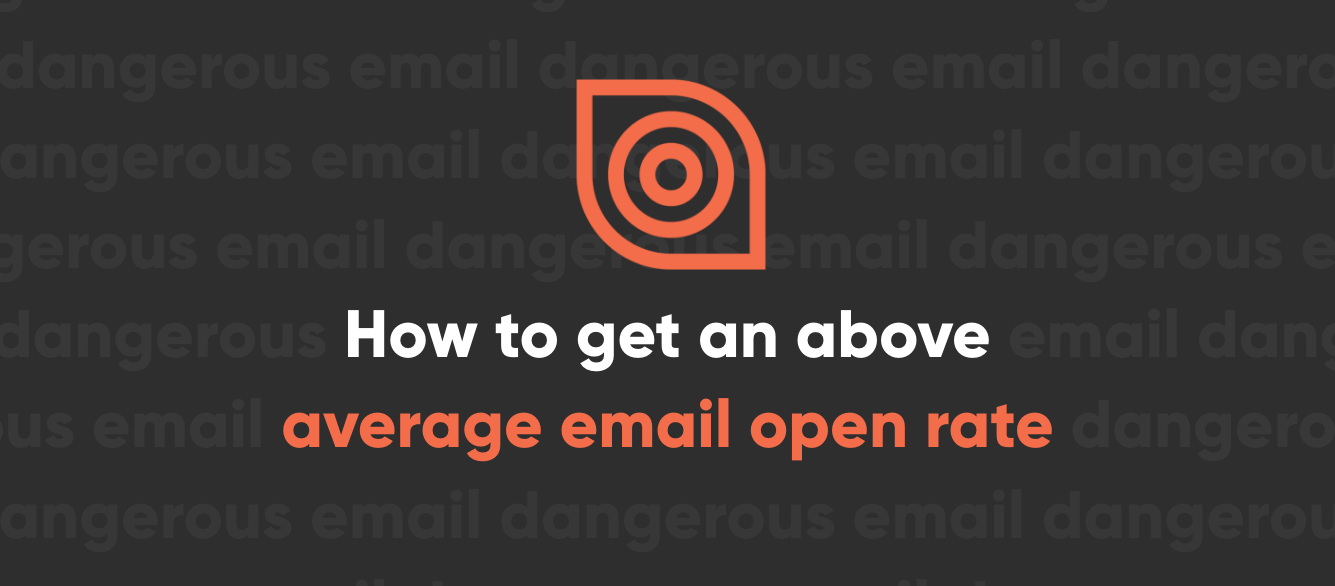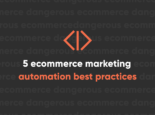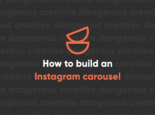
How to get an above average email open rate

Unless you’re a digital marketer who’s been living under a digital rock lately, you’re probably already aware that email open rates are about to absolutely skyrocket this fall. Of course, you can thank our Apple overlords for this, as they’re once again huffing and puffing on our delicate, house-of-straw industry.
(Editor’s note: In 2021, digital marketing is more akin to a house of sticks, but I digress.)
In the coming weeks, Apple will be unleashing its latest email privacy update. After the update, any emails sent to Apple Mail users who've opted into "Mail Privacy Protection" will automatically appear as opened and read.
No knocking. No ringing the doorbell. Just a wide-open door the second your email arrives.
Now don’t get me wrong, I think online privacy is great, but this is obviously not an ideal situation for anyone in digital marketing.
Does this mean open rates are going to be a thing of the past? No, far from it. Open rates have always been a particularly skewed metric, as anyone with OCD can tell you. (“I don’t care if it’s in my ‘Deleted Items’ folder, it needs to marked as read or I won’t be able to sleep at night.”)
This update will obviously make it harder to glean actionable insights from the data, but it won’t be impossible. We got this! We’ll just need to work a little harder is all. Go ahead, grab your bricks and mortar. I’ll wait.
What are email open rates?
Before we get too far into the thick of it, it's probably wise to first define what an open rate is for those of you who are newer to the trenches. An open rate—as the name so perfectly suggests—is the percentage of your followers who actually open a particular email.
So, if you send an email to your 200 subscribers and only 30 of them open it, you have yourself an open rate of 15%. (If you doublechecked that without a calculator, your high school math teacher would be proud.)
You can either take this number individually for each email or campaign, or you can average it across all of your messages. Whatever floats your boat.
What is an average open rate?
Now, speaking of high school math, 50% is failing, right? Well, luckily for you, that’s not the case when it comes to open rates.
Before you beat yourself up for not getting a passing grade, you'd be happy to know the average email open rate in 2021 is only around 18%. Of course, this can vary quite a bit depending on your region and industry, but it typically doesn’t go much higher than 25%.
Congratulations—failing is the new passing with flying colors.
5 proven tactics for getting above average open rates
Now that you know what open rates are and the number you want to exceed, it’s time to blow that average out of the water. But before you ask, no, my advice is not going to be to add more Apple fanboys to your contact list (although that would technically work in the short term).
Instead, I’ll present you with five strategies that will legitimately increase your email open rates and help you huff, puff, and blow your marketing goals down.
Let’s begin.
1. Conduct A/B tests to see what works best
Sometimes, the best way to determine if something will work or not is to conduct a test. It's a lot like science, only far less messy.
Essentially, an A/B test is when you run two slightly different variations of something simultaneously to see how the results differ. For example, you might test two versions of the same email, where the A and B versions are identical, save for one key detail such as the wording of the subject line. Just make sure you avoid these 5 common A/B testing pitfalls.
The idea is that there will be at least some difference in the results (open rates, CTR, etc.), which will help you know with which one to move forward. Once you determine the, roll that one out to the rest of your email list. Be sure to document the results though because you may want to run further testing down the road.
A/B test ideas:
- Send time: Does your contact list contain more early birds or night owls?
- Day of the week: Try Monday vs. Thursday, a weekday vs. a weekend, etc.
- Tone of voice: Play around with professional vs. conversational tones (just be sure to stay within your company's established brand voice).
- Emojis: Try adding a relevant emoji to the beginning or end of the subject line.
2. Determine the right frequency of emails
Whether you're trying to increase your email open rates or searching for your favorite radio station on an old FM dial—finding the right frequency is key.
One of the primary reasons people will stop opening your emails or—heaven forbid—unsubscribe from your list altogether, is because they feel like they're getting absolutely flooded with junk. Or, to a lesser extent, if you're not reaching out enough—say only one or two times a year—they may have lost interest in your brand entirely.
So, how do you know if your email frequency is right for your audience? Here are a few things you can do:
- A/B test different frequencies: Try increasing (or decreasing) the email frequency for one test segment and see which one performs better. Then continue to tweak the frequencies until you find the right fit.
- Ask your audience: Put out a survey and simply ask your contacts to tell you their preferred frequency. Keep in mind that you may need to incentivize responses to get enough valuable input.
- Consider your marketing goals: If your goal is to drive website traffic, more emails can be beneficial. If your goal is to drive qualified leads, fewer emails may be the best route to take.
3. Incorporate anticipation campaigns
We live in a world of constant anticipation. If you don't believe me, see exhibit A: the teaser trailer. Not only do we have trailers for movies, but we now have trailers for the trailers. It's wild.
As crazy as it seems, there is a very good reason for this. People like to anticipate things, and the giddier you make them, the more likely they are to engage with your brand when the time comes.
So the next time you're planning to drop a big sale or an exciting new piece of content, send out an email a day or two beforehand that hints that something is on the way. Not only can this boost your primary email's open rate, but it can also cause people to check their inboxes more regularly, looking for your email to arrive.
4. Segment your email list
Another common reason people stop opening up promotional emails is that too often they're left wondering, "Was this really meant for me?"
Imagine you're an athletic shoe brand. Do you really want to send the exact same campaigns to a 40-something mom of three who loves CrossFit as you would to an 18-year-old male who lives and breathes basketball? Some of them, sure, but probably not all. If the latter opens up too many women's shoe sale emails (try saying that five times fast), he's going to lose interest quickly.
Unless you have a very niche product or service, you probably have an audience with at least a few distinct groups of people. By breaking your contacts into logical segments (age, gender, shared interests, etc.), you can tailor your emails to those specific groups.
This allows you to better understand what each segment is interested in and deliver them more relevant content and promotions, which should go a long way toward a better open rate.
5. Set up a re-engagement series
If you've ever received a "We miss you" email, then you’ve been targeted in a re-engagement campaign. Think of these like the last "Hello?" you utter on an empty call before hanging up the phone in frustration.
The idea here is to weed out your contacts that aren't ever going to be customers and are no longer interested in what you have to say. The best way to do this is to set up an automated re-engagement series that triggers when someone hasn't engaged with your emails for a set amount of time.
That set amount of time part is the key here. While it’s typically anywhere from 6–12 months, this can vary based on your business, industry, and audience. For instance, if your business is seasonal, you may want to consider a longer time period.
Once you've defined your unengaged window, it's time to create the automated emails that you want to send. The goal here is to have an attention-getting headline with some kind of promotion or incentive (10% off, a free side, etc.) that will entice anyone halfway interested in your brand to return.
Okay, so now for the hard part. There are going to be contacts that will continue to ignore you like a bag of broccoli in a candy store. It’s time to delete or unsubscribe them from your email list. I understand if you're hesitant to do this but losing them isn't costing you any money—it's actually saving you money and improving your data in the process.
Create email campaigns that crush your marketing goals with Perrill
At Perrill, our team of seasoned marketing automation fanatics are obsessed with data-driven email campaigns and automated workflows and aren’t afraid to test new, innovative ideas if something isn’t working.
You can trust us to not only be on top of the latest industry updates (like the Apple sheeple we are), but to create a strategy tailored towards your audience with logical reasoning to support our dangerously good game plans.
Sound good? Contact us today to get a free email marketing audit.

Greg Johnson
Join Our Newsletter


Why Google Shouldn’t Reveal Its Search Algorithm


8 Signs You Need a Website Redesign


